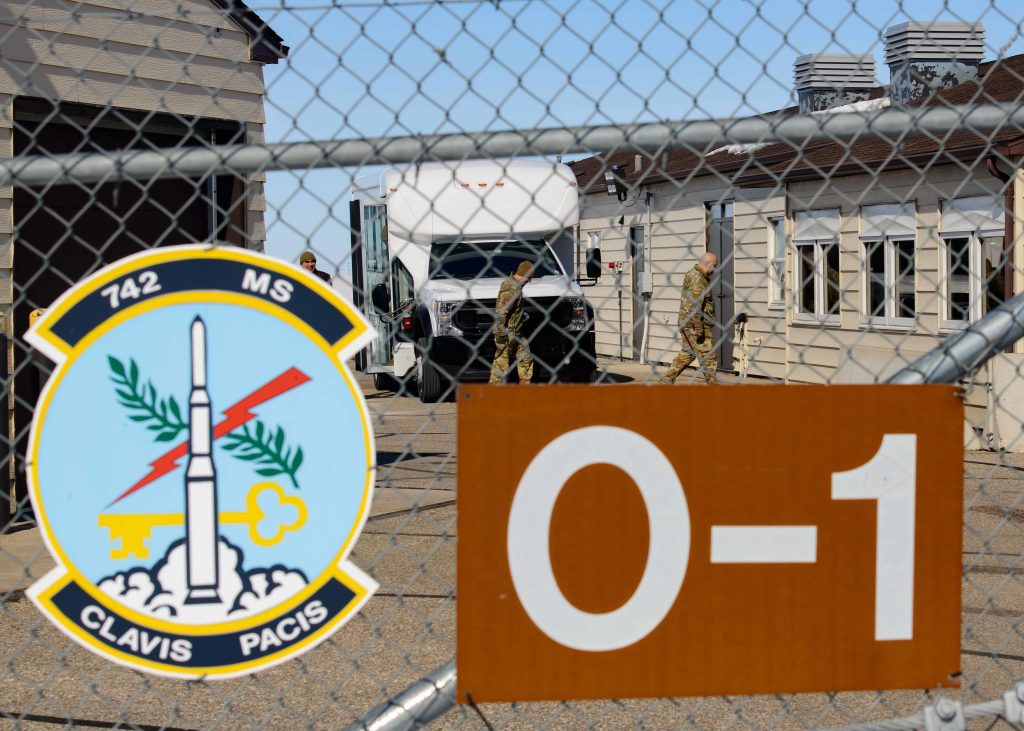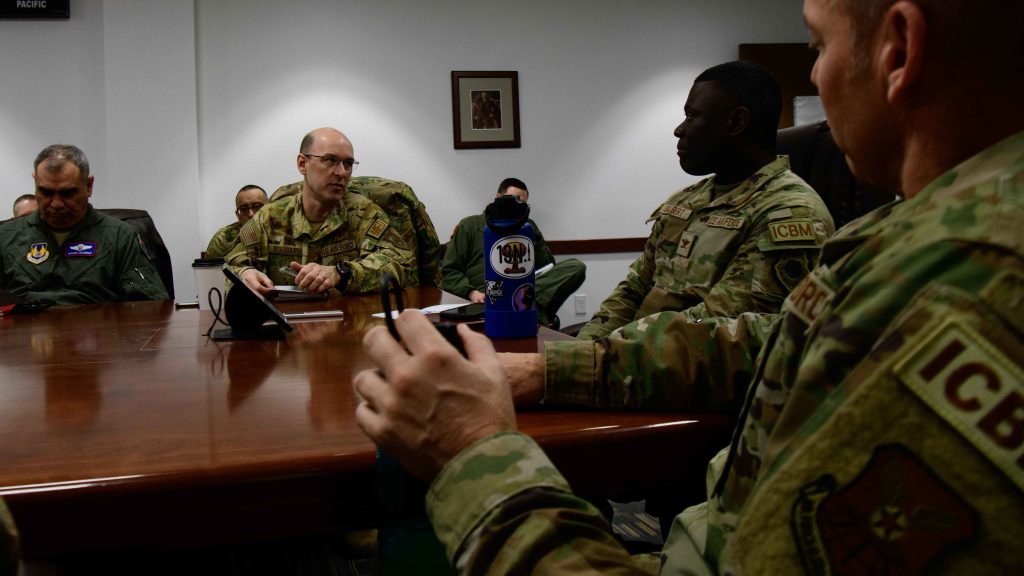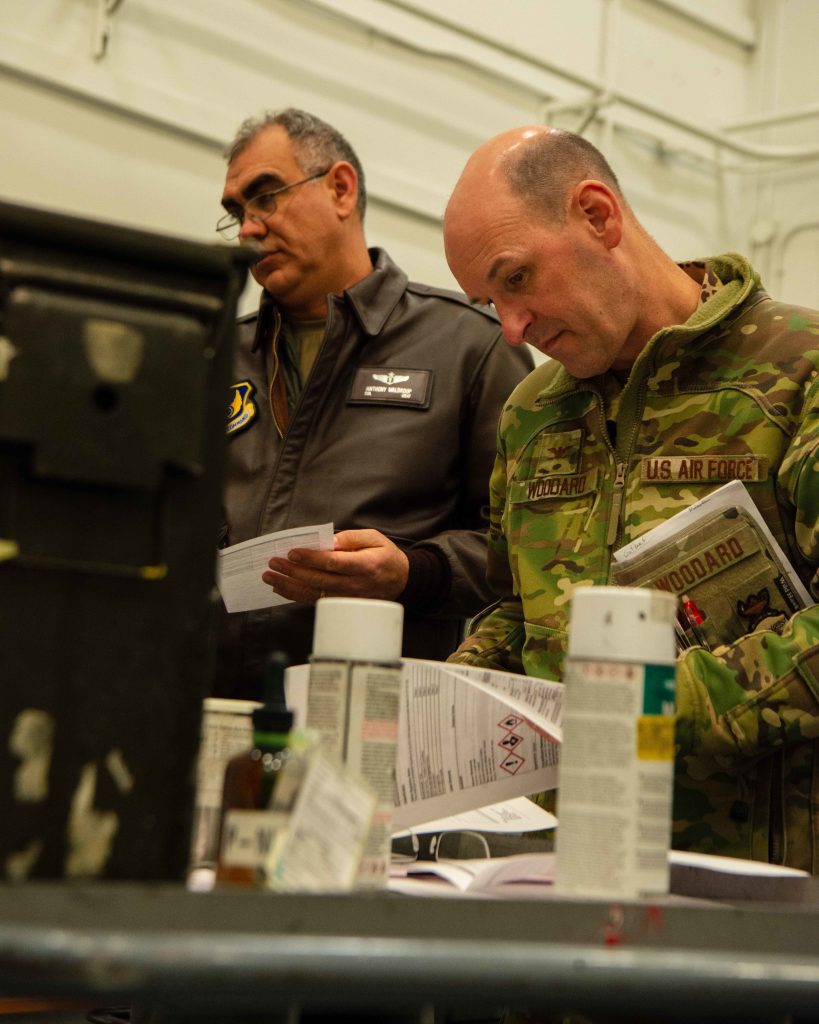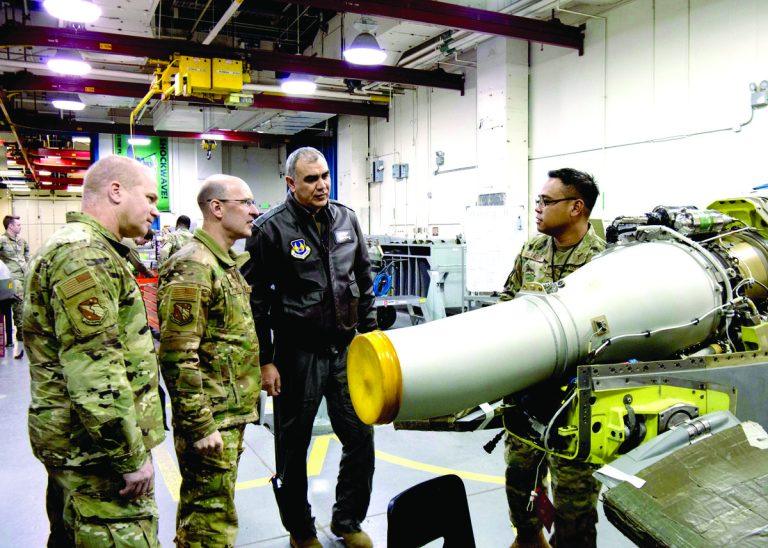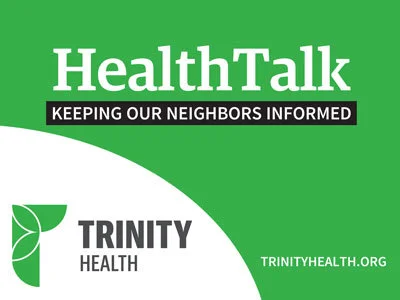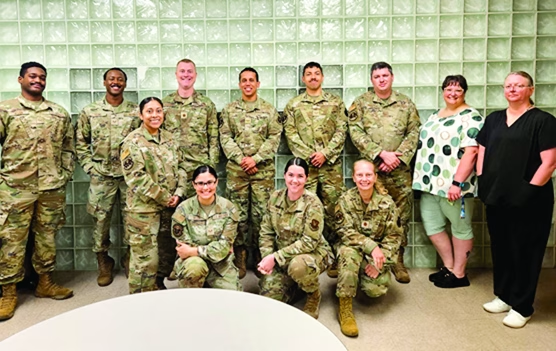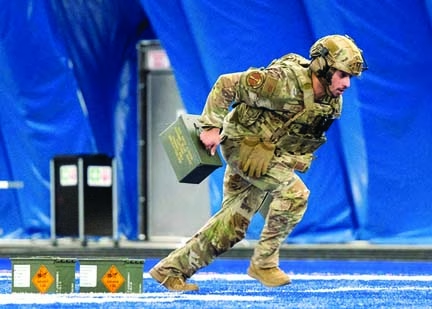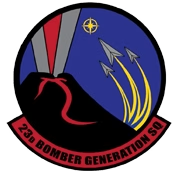BARKSDALE AIR FORCE, La. —
The U.S. Air Force School of Aerospace Medicine began conducting its formal assessment for the Missile Community Cancer Study by visiting Air Force Global Strike Command’s three intercontinental ballistic missile bases.
This step officially begins addressing specific cancer concerns raised by missile community members across related career fields, while also examining the possibility of clusters of Non-Hodgkin’s Lymphoma at ICBM bases.
“Visiting the bases and seeing the mission is an important step in our process,” said Col. Tory Woodard, USAFSAM commander. “I believe this will help USAFAM understand the operational and occupational environments, which will ultimately guide our development of epidemiologic studies and also help AFGSC medics develop immediate and future environmental risk assessment plans.”
A USAFSAM team consisting of experts in aerospace medicine, public health and bioenvironmental engineering, along with additional leaders from the AFGSC Office of the Command Surgeon and the Defense Health Agency recently visited F.E. Warren Air Force Base, Wyoming; Malmstrom Air Force Base, Montana; and Minot Air Force Base, North Dakota.
The group conducted the initial visit to each base for an orientation of missile operations and base facilities. Woodard said the visits to the operational wings will help to develop strategies for assessing the presence of potential occupational exposure hazards in work environments associated with the missile career field. The visits specifically included base tours, tours of Missile Alert Facilities and Launch Control Centers, and weapons maintenance facilities.
The team also met with the 20th Air Force Commander, Maj. Gen. Michael J. Lutton, with the senior leadership teams at all three bases, and with leaders and experts from each base’s Medical Groups – specifically medical, Public Health and Bioenvironmental Engineering experts.
In addition, the team conducted meetings with Air Force Nuclear Weapons Center experts to achieve greater context, and reviewed historical records of facilities to gain further understanding of complexity, equipment used and potential hazards. Additionally, the team collaborated with base civil engineering experts to review environmental hazards, water sources, local environmental dynamics and other potential factors.
As part of the visits, the teams reviewed current environmental sampling efforts, with an eye towards determining what future efforts would be appropriate. One limitation medical teams have is that electronic monitoring equipment that can be used in other occupational environments must be specifically cleared to be used in the launch facilities and launch control centers. This often requires complex reviews and waivers to allow the equipment to be used in the sensitive spaces. Since the prior studies in 2001 and 2005, newer technology is available to the medics, but these will now need to be cleared. AFGSC leadership is aware and will be assisting USAFSAM in expediting these clearances, where possible.
Key concerns addressed by the assessment will include, but are not limited to: Are Airmen safe to continue missile field operations? Are active duty or retired missileers at increased risk of developing NHL? Are active duty or retired career field members that support, or are associated with, the missile launch mission at increased risk of developing NHL or other cancers?
The ongoing studies will assess factors such as geographic locations, operating environments, local environmental factors and time spent in the mission environment. Current missile operations include three bases covering an operational area spanning five states (Colorado, Montana, Nebraska, North Dakota and Wyoming). Looking historically at the ICBM enterprise, ICBM units dating back to 1983 operated at nine bases, while currently there are only three active bases. While the study efforts may expand to additional bases down the road, Woodard noted the team is focusing its efforts on the three active bases in the initial stages of the process, stating, “One of our priority efforts is to ensure current operations are safe.”
As the study design begins to take shape, other considerations include an evaluation of career fields supporting missile operations, an understanding of the size of career field personnel who work at limited duty locations, and ensuring the study includes as many missileers as possible to increase study accuracy.
Evaluation by worksite locations will investigate launch control centers vs. missile launch facilities, as the significantly different exposures need to be evaluated to help the team determine specific potential cancer risks and types of cancers seen in these workers.
“A focus on NHL is required, but that may be too narrow of a focus,” Woodard said, noting the study will likely expand to investigate the most frequent cancers that may appear within the study population. “We are conducting the multi-phased study with trigger points that will help guide our need to access additional records or data sources, if indicated.”
“If there is any evidence of potential increased cancer risk, or an elevation in cancer incidence or mortality, as compared to national rates, leadership will immediately be notified,” Woodard said. “If any of those happen, additional studies or controlled studies will be initiated to help identify any potential causes, where possible.”
Woodard said if there is no elevation in cancer incidence or mortality as compared to national rates that phase of the study will conclude. Any study outcomes will help medics and patients better understand individual risks and will improve care, inform occupational assessments and may influence future cancer screening recommendations.
Throughout the process, experts will determine how many individuals it takes in a study population to compare to national averages to make a useful incidence calculation. The team is also working to ascertain how many years back they can go for data collection and analysis, as they may be limited by the availability of accurate and attainable records that pre-date electronic medical records. Importantly, if the studies do find increased incidence and progresses to determine causation, additional steps and measures – such as potentially establishing a registry – will be necessary to continue the assessment
In this comprehensive look at Air Force Specialty Codes, worksites and additional cancers, the total estimated completion time for the study will likely be months, but Woodard said Gen. Thomas A. Bussiere, commander, Air Force Global Strike Command, chose an assessment that offers the shortest overall assessment timeline and one that will rapidly investigate NHL, specifically.
Woodard also noted the team charged with this extraordinarily important responsibility is a highly experienced team that previously completed the USAFSAM’s Fighter Aviator Cancer Study. In addition, he highlighted the existing synergy available to the team as USAFSAM already maintains access to DHA and AFPC databases, saving significant request processing time that could be accrued in working with outside agencies.
Importantly, Woodard said, the USAFSAM team also is partnered with the DHA. As part of the continued DHA transition, portions of the Public Health and Occupational and Environmental Health departments hare now part of what is called the Defense Centers for Public Health Dayton. Additionally, experts from the Armed Forces Health Surveillance Division within DHA Public accompanied the team on the visits to Malmstrom and Minot Air Force Bases, and will be assisting USAFSAM with their ongoing studies.
“Our top-notch professionals are uniquely positioned within the DoD and DHA enterprise to conduct this analysis efficiently and effectively,” Woodard said.
“As we move through the various phases of assessment and review, we will continue to provide updates, including pertinent information, as and when such information is discovered or identified,” Bussiere said. “While we continue to work through this process, service members, their family members and former service members who may have concerns or questions are encouraged to speak with their healthcare providers.”
If any Airman – past or present, Guardian, or family member has a question or concern, they are encouraged to speak to their medical provider or they can submit their question through the AFGSC Official Website at: https://www.afgsc.af.mil/Contact-Us/ or via the Office of the Air Force Surgeon General at: https://www.airforcemedicine.af.mil/Contact-Us/.
In addition, a website specific to this issue is available as a resource at: https://www.airforcemedicine.af.mil/Resources/Missile-Community-Cancer-Study/
“It is my personal pledge to all Strikers, Airmen, Guardians and family members – past and present – to remain transparent throughout this process and we will continue to maintain an open dialogue,” Bussiere said. “This is my priority.”
